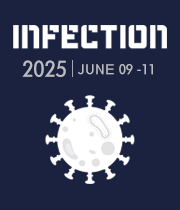Title : Overlooked possible menace to life also known as PML
Abstract:
Introduction: Progressive Multifocal Leukoencephalopathy (PML) is a relatively rare manifestation of immunosuppressed patients due to medication or diseases such as HIV/AIDS. PML arises from the reactivation of the human polyomavirus, more commonly known as JC virus. Over the years, the incidence of PML has decreased given the wide spectra of medications currently available to combat HIV. Although the use of antiretroviral therapy (ART) has been effective in decreasing the likelihood of patients progressing to AIDS, approximately 3-7% of patients with AIDS develop PML. Clinical presentation varies given its demyelinating nature but typically presents as neurologic symptoms that may or may not follow a specific blood vessel pattern.
Case Description: A 37-year-old female with a history of HIV, non-compliant with treatment, presented to the emergency department with progressive weakness of the left upper and lower extremities for the past month. Her symptoms began in a previous hospitalization where she was being treated for pneumocystis pneumonia (PCP) with TMP-SMX and steroids. Prior to discharge, she experienced left-sided weakness and suffered a fall while walking but had preserved motor function and independence. She was discharged with a disposition of outpatient follow-up with a neurologist, which she was unable to attend. Her symptoms continued to progress, resulting in complete loss of function on her left side, loss of independence, and becoming bedridden, needing assistance with activities of daily living. Upon arrival, physical examination revealed a hemodynamically stable and afebrile patient with left-sided hemiplegia associated with neuropathic pain along with left nasolabial flattening, asymmetric smile, and decreased facial sensation of the left side in the V2-V3. Laboratory findings were significant for HIV quantitative RNA is 4370 cp/mL and absolute CD4 of 17, consistent with AIDS. A brain MRI demonstrated a hyperintensity involving infratentorial and supratentorial compartments, including portions of the body of the corpus callosum, that did not show enhancement after contrast administration suggestive of PML based on the clinical history of HIV/AIDS. A lumbar puncture was performed that revealed a negative JC Virus PCR in the cerebrospinal fluid (CSF). The patient was discharged on ART to continue her outpatient care.
Conclusion: PML is a rare but life-threatening complication of untreated HIV with a life-expectancy of about one year. JC-DNA detection in the CSF has a sensitivity of 70-80%, meaning that a negative result does not necessarily rule out the diagnosis of PML secondary to JC virus. We present the case of a patient with AIDS who exhibited symptoms of PML that was initially discharged from an institution with neurologic symptoms and was possibly undiagnosed. It is important for clinicians to identify early symptomatology and have a low threshold to explore neurologic symptoms in patients with HIV/AIDS. This vigilance can prevent or slow the progression of this fatal disease, which predominantly affects a marginalized population.


